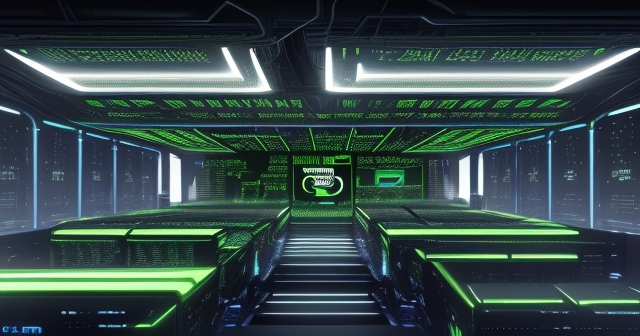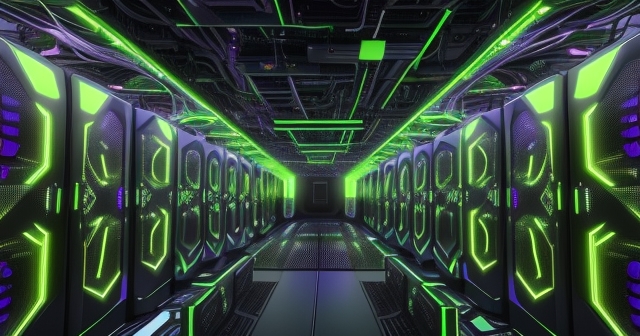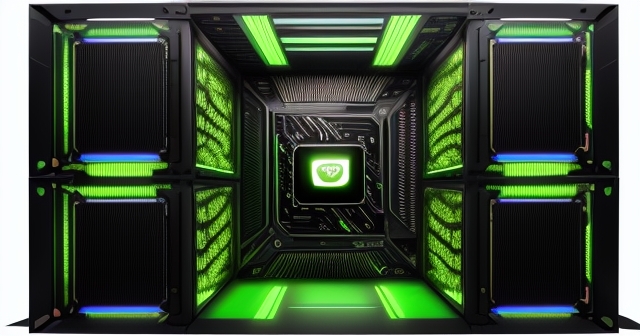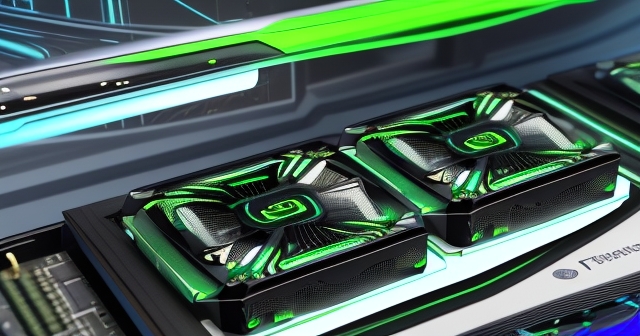Welcome, everyone, to a deep dive into one of the most critical, yet often overlooked, aspects of the artificial intelligence revolution: the underlying hardware. While we marvel at the capabilities of large language models like those from OpenAI, the foundation supporting these wonders is a complex and intensely competitive world of semiconductors, data centers, and strategic investments. Today, we’ll explore the fascinating dynamic between a leading AI lab, OpenAI, its visionary CEO, Sam Altman, and the undisputed king of AI hardware, Nvidia.
You’ve likely heard about the incredible progress being made in Artificial Intelligence (AI), particularly in the realm of generative models. These systems require immense computational power, far beyond what traditional processors can provide. This is where the Graphics Processing Unit, or GPU, steps onto the stage. Originally designed for rendering complex graphics in video games, GPUs turned out to be exceptionally well-suited for the parallel processing demands of training and running deep learning models. And for years now, one company has dominated this critical market: Nvidia.
- GPUs are essential for training complex AI models.
- Nvidia’s dominance in this market has led to significant strategic maneuvering among AI companies.
- Access to high-performance hardware is a critical issue for AI development.

But as AI models become exponentially larger and more sophisticated, the demand for these specialized processors is skyrocketing, creating bottlenecks and intense strategic maneuvering. We’re witnessing a situation where access to sufficient high-performance hardware is becoming a limiting factor for AI development and deployment. This isn’t just a technical challenge; it’s a major business and strategic hurdle that even pioneers like OpenAI are grappling with, directly impacting their ability to bring powerful new models to you.
OpenAI’s Growth Pains: The Critical GPU Shortage Hitting Home
The sheer scale of modern AI models is difficult to grasp. Training a state-of-the-art large language model can cost tens or even hundreds of millions of dollars, with the vast majority of that cost attributed to compute time on thousands of powerful GPUs. Running these models for inference (generating text, code, images, etc., based on your prompts) also requires significant hardware resources, though typically less demanding per query than training.
| Item | Est. Cost | Resource Type |
|---|---|---|
| State-of-the-art LLM Training | $100M+ | Compute Time |
| Model Inference | Variable | Compute Resources |
Recently, Sam Altman, the public face of OpenAI, has been remarkably candid about the company’s most pressing challenge: a severe shortage of the necessary hardware, specifically GPUs. He has stated that OpenAI is effectively “out of GPUs,” a situation that directly impacts their ability to roll out new features and more advanced models to their rapidly growing user base. Imagine having the blueprint for a groundbreaking product but lacking the essential factory capacity to build it at scale.
- Sam Altman has acknowledged the serious GPU shortage at OpenAI.
- New models like GPT-4.5 require extensive hardware resources.
- The shortage affects the rollout of features and models for users.
This isn’t a small-scale problem. According to reports and Altman’s own statements, deploying cutting-edge models like the planned GPT-4.5 (described as “giant” and “expensive,” highlighting its computational needs) requires acquiring not just hundreds, but “tens of thousands” of additional GPUs. This immense demand puts a strain on the existing global supply chain, which is largely dominated by a single player, Nvidia.
For us as users and observers of the AI space, this GPU shortage isn’t just an abstract issue. It translates directly into longer waiting times for new features, potential limitations on usage, and higher costs for accessing powerful AI services. It underscores how the physical infrastructure – the chips and the data centers housing them – is just as crucial as the groundbreaking algorithms and software being developed on top.
Beyond External Supply: OpenAI’s Strategic Push into Custom Silicon
Facing this critical hardware dependency and the constraints of relying almost entirely on an external supplier, even a dominant one like Nvidia, OpenAI is taking strategic steps to gain more control over its compute future. One of the most significant of these steps is exploring the development of its own proprietary AI chips, or custom silicon.

Developing specialized semiconductors is an incredibly complex, time-consuming, and expensive endeavor. It requires deep expertise in chip design, massive investment in research and development, and the establishment of relationships with fabrication plants (fabs), which are themselves scarce and costly resources. Yet, companies like Google (with their TPUs) and Apple (with their M-series chips) have shown the strategic advantages of designing hardware specifically tailored to their unique software needs and workloads.
For OpenAI, building its own custom AI chips could offer several potential benefits. Firstly, it could potentially lead to chips optimized precisely for the architecture and computational patterns of their specific LLMs and other AI models. This could result in significant improvements in performance and energy efficiency compared to general-purpose AI accelerators. Secondly, it would reduce their reliance on Nvidia, mitigating the risks associated with supply chain constraints, pricing power, and future technological divergence.
This move signals a long-term strategic vision. It’s not about replacing Nvidia overnight, but about building internal capacity and diversifying their hardware foundation. It demonstrates that OpenAI sees controlling the underlying compute infrastructure as essential for achieving its ambitious goals, including the development of Artificial General Intelligence (AGI), which would require computational resources on an unprecedented scale.
Building the Future: OpenAI’s Investment in Massive Data Centers
Developing cutting-edge AI chips is only one piece of the puzzle. These powerful processors need to be housed, cooled, powered, and interconnected within vast computational facilities. This is where OpenAI‘s plans to invest heavily in building its own large-scale data centers come into play.
Modern AI data centers are far from simple server farms. They are sophisticated, energy-intensive complexes designed to support the unique demands of high-performance computing (HPC) workloads like AI model training and inference. They require robust power grids, advanced cooling systems (often using liquid cooling for dense GPU clusters), high-speed networking within and between racks, and complex software for orchestration and management.
| Facility Requirement | Details |
|---|---|
| Power Grids | Robust and reliable |
| Cooling Systems | Advanced liquid cooling |
| Networking | High-speed connectivity |
By building their own data centers, OpenAI gains greater control over the operational environment for their AI models. They can optimize the physical layout and infrastructure to match the specific requirements of their chosen hardware (whether it’s Nvidia GPUs, their own custom silicon, or a mix). This vertical integration can lead to efficiencies in power consumption, cooling, and overall performance, which are critical factors given the “expensive” nature of running their models.
Furthermore, owning and operating their own infrastructure provides greater security and control over their valuable intellectual property – the models themselves. While public cloud providers offer flexibility and scalability, having dedicated facilities ensures that their most sensitive work is performed in an environment they fully control. This infrastructure push, alongside the chip development efforts, highlights the enormous capital investment required to compete at the forefront of AI development.
The Reign of Nvidia: Why the Green Team Dominates the AI Chip Market
To understand the challenges faced by OpenAI and aspiring challengers, we must first appreciate the formidable position held by Nvidia. For years, Nvidia has invested heavily in developing its GPUs and the surrounding software ecosystem, particularly the CUDA platform. CUDA provides developers with tools and libraries that make it significantly easier to program GPUs for general-purpose computation, including AI tasks.

This combination of powerful hardware and a developer-friendly software platform created a virtuous cycle. As more researchers and developers adopted CUDA for AI, they became invested in the Nvidia ecosystem. This led to more software being optimized for Nvidia GPUs, further solidifying their position as the go-to choice for AI workloads. This network effect is a powerful barrier to entry for competitors.
Nvidia’s chips, such as the A100 and H100 series, have become the de facto standard for serious AI work. Their performance in both training and inference tasks is currently unmatched in the market for general-purpose AI accelerators. Companies like OpenAI need this raw power, and until alternatives can deliver comparable performance at scale, they remain heavily reliant on Nvidia’s supply.
Moreover, Nvidia has years of experience navigating the complexities of semiconductor manufacturing and supply chains. Ramping up production of cutting-edge chips is notoriously difficult, requiring intricate coordination with foundries like TSMC. Nvidia’s established relationships and expertise in this area give them a significant advantage in meeting global demand, even if that demand currently outstrips their capacity.
Challenging the Giant: The Ambitions of Startups Like Rain AI
Despite Nvidia’s dominance, the massive opportunity in the AI chip market attracts numerous startups aiming to carve out a niche or even directly compete. These companies often focus on novel architectures or specialized applications, hoping to offer advantages in areas like energy efficiency, cost, or performance for specific types of AI tasks. One such startup that garnered attention, partly due to early backing from Sam Altman, is Rain AI.

Rain AI was developing chips based on a concept called neuromorphic computing. Unlike traditional processors or even standard GPUs, which process data sequentially or in large parallel batches using conventional memory and processing units, neuromorphic chips attempt to mimic the structure and function of the human brain. They aim to integrate processing and memory more closely and operate on principles inspired by biological neurons and synapses.
The potential advantage of neuromorphic chips lies primarily in their potential for extreme energy efficiency, especially for certain types of AI tasks that involve pattern recognition or processing continuous streams of data (like sensory input). If successful, Rain AI hoped to offer a compelling alternative for running AI models, particularly at the edge or in scenarios where power consumption is a major constraint. Their goal was to challenge Nvidia’s dominance by offering a fundamentally different and more efficient approach to AI computation.
Early support from influential figures like Sam Altman (who invested in their seed round) provided validation and helped attract initial interest. This is a common pattern in the startup world: backing from prominent individuals can lend credibility and open doors, but it doesn’t guarantee success, especially when taking on deeply entrenched incumbents.
The Hurdles Startups Face: The Struggles of Rain AI
The journey for any startup attempting to disrupt a market dominated by a giant like Nvidia is fraught with challenges, and the story of Rain AI serves as a stark illustration of these difficulties. Despite promising test results from their technology, Rain AI reportedly faced significant hurdles in translating technological potential into commercial success and securing the necessary follow-on funding to scale their operations.
| Challenge | Description |
|---|---|
| Commercial Contracts | Struggled to secure crucial deals with major tech |
| Funding Round | Failed to close a crucial Series B funding round |
| Investor Confidence | Concerns regarding market readiness and competitive challenges |
According to reports, Rain AI struggled to secure crucial commercial contracts. Building a truly disruptive chip requires not only demonstrating technical feasibility but also convincing potential customers (which for AI chips means major tech companies, cloud providers, or enterprises building their own AI infrastructure) to commit to adopting a new and unproven platform. This often requires dedicated sales acumen and deep relationships within potential client organizations.
Furthermore, Rain AI reportedly failed to close a crucial Series B funding round, aiming to raise $150 million. Securing funding at this stage typically requires startups to demonstrate tangible progress beyond initial prototypes – often including market traction, a clear path to revenue, and strong customer engagement. The inability to close this round indicates a potential lack of sufficient investor confidence, likely stemming from concerns about market readiness, competitive challenges from Nvidia, or the long timeline and high cost associated with bringing a novel chip to market.
Without the anticipated Series B funding, Rain AI reportedly faced a cash crunch, depleting its reserves. While they managed to secure emergency bridge funding, this situation significantly weakened their negotiating position and highlighted the immense capital burn rate inherent in hardware development. This narrative underscores that even innovative technology and influential early backers are not enough to overcome the fundamental business challenges of sales execution, market validation, and securing substantial follow-on investment in the highly competitive AI hardware space.
The Strategic Value of Troubled Assets: Rain AI’s Acquisition Prospects
Having failed to secure independent funding and facing financial difficulties, Rain AI is now reportedly exploring strategic alternatives, including potential acquisition. This development, while unfortunate for Rain AI as an independent entity, highlights the intense strategic value that established tech firms place on acquiring talent and technology in the AI hardware domain, even from struggling startups.
Interestingly, one of the potential buyers reportedly in discussions with Rain AI is none other than OpenAI. From OpenAI’s perspective, acquiring Rain AI could be a strategic move to accelerate their own efforts in custom silicon. Even if Rain AI’s specific neuromorphic architecture isn’t the perfect fit for all of OpenAI’s needs, acquiring the company could provide access to a team of experienced chip designers (like Jean-Didier Allegrucci, who previously worked on custom silicon at Apple), valuable intellectual property, and a head start in building internal hardware expertise.
Acquiring a struggling startup with promising tech can be faster and potentially less expensive than building a team and technology from scratch. It’s a way for large companies with significant capital to jumpstart their capabilities in a critical area. For OpenAI, adding hardware design talent and resources could directly support their stated goal of developing their own AI chips and reducing dependence on external suppliers like Nvidia.
This situation illustrates the dynamics of the tech industry M&A (Mergers and Acquisitions) landscape. Companies facing funding difficulties often become attractive targets for larger players looking to acquire specific capabilities, particularly in rapidly evolving and strategically important fields like AI hardware. It’s a complex interplay of opportunity, distress, and strategic positioning against market leaders like Nvidia.
Industry Leaders Converge: Altman and Huang Meet Amidst Global Tech Shifts
Amidst the intense competition and strategic maneuvering in the AI hardware space, it’s noteworthy when key figures from different parts of the ecosystem converge. A significant recent detail is the attendance of both Sam Altman (OpenAI CEO) and Jensen Huang (Nvidia CEO) at the same high-profile event, the US-Saudi forum in Saudi Arabia.

Such forums bring together global leaders from government, finance, and technology to discuss major economic and strategic issues. The presence of both Altman and Huang underscores the global importance of Artificial Intelligence and the underlying infrastructure required to power it. It suggests that discussions about AI infrastructure, chip supply chains, investment in future technologies, and potentially geopolitical aspects of tech dominance are happening at the highest levels.
While the specifics of their interactions or discussions at the forum are not publicly detailed, their mere presence together is significant. It highlights the interconnectedness of the AI ecosystem – the leading AI labs like OpenAI are heavily reliant on the hardware providers like Nvidia, even as they explore ways to reduce that reliance. These high-level meetings can involve discussions about future demand, potential collaborations, investment opportunities (perhaps from global capital sources looking to fund AI infrastructure), or navigating regulatory landscapes.
It serves as a reminder that the story of AI hardware is not just about technology and company competition; it’s also about global capital flows, international relations, and strategic national interests in securing access to the compute power that will drive the next wave of economic and technological growth. The presence of these leaders at a forum like this signals that AI infrastructure is now firmly on the agenda of global strategic planning.
The Complex Dynamics: Dependence, Competition, and Strategic Investment
The narrative unfolding around Sam Altman, OpenAI’s hardware needs, and the position of Nvidia is a microcosm of the broader dynamics in the Artificial Intelligence industry. We see a clear tension between the explosive, almost insatiable, demand for compute power from AI developers and the finite capacity of the current hardware supply chain, largely controlled by a single dominant player.
- OpenAI’s reliance on Nvidia creates strategic challenges.
- Hardware development requires significant investment.
- The interaction between tech companies is crucial in navigating this landscape.
This situation forces AI labs like OpenAI to make difficult strategic choices. Relying entirely on a single external vendor, however capable, introduces risks related to supply availability, pricing power, and the vendor’s own strategic direction. Therefore, diversifying supply and exploring avenues for greater control over hardware – through custom silicon development and building dedicated data centers – becomes not just an option, but a strategic imperative for companies operating at the frontier of AI.
At the same time, challenging an incumbent like Nvidia, with its established technology, deep ecosystem, and manufacturing expertise, is incredibly difficult. The struggles of startups like Rain AI demonstrate that having innovative technology is often insufficient without robust execution on the business side, including sales, fundraising, and navigating complex market dynamics. The path to disrupting the AI chip market is long, expensive, and uncertain.
This landscape is further complicated by the role of global capital and strategic investment. The massive funding rounds raised by AI labs like OpenAI highlight the vast sums flowing into the software side of AI. However, these funds must ultimately be translated into physical compute infrastructure. This creates opportunities for investors in hardware companies (both established players like Nvidia and promising startups), as well as for those funding the build-out of data centers and energy infrastructure.
Looking Ahead: The Compute Race Defines the Future of AI
What does all of this mean for the future of Artificial Intelligence and the investment landscape? It means that the “compute race” is just as significant as the race to develop more intelligent algorithms or build more capable models. Without sufficient hardware, even the most brilliant software innovations will remain limited in their impact and accessibility.
We can expect to see continued intense demand for high-performance GPUs and other AI accelerators in the coming years. Nvidia is likely to remain a dominant force, benefiting from its current lead and established ecosystem. However, the strategic moves by major players like OpenAI to develop their own hardware signal a future where the AI chip market may become more fragmented, with more companies pursuing specialized or custom solutions tailored to their unique needs.
Investment in AI hardware, from chip design startups to the construction of massive data centers, will continue to be a major theme. Companies that can successfully innovate in chip architecture, improve energy efficiency, secure manufacturing capacity, or build and operate next-generation AI infrastructure are positioned to capitalize on this trend.
For investors and those following the technology sector, understanding the dynamics of the AI hardware market – the interplay between demand drivers (like OpenAI), supply constraints (impacting GPU availability), established players (Nvidia), and aspiring challengers (like Rain AI and internal efforts) – is essential. It provides critical insights into the bottlenecks, strategic priorities, and potential investment opportunities that will shape the trajectory of Artificial Intelligence for years to come. The race for AI isn’t just about intelligence; it’s fundamentally about the power to compute.
sam altman nvidiaFAQ
Q:What is the primary cause of the GPU shortage at OpenAI?
A:The shortage is primarily due to the exponentially increasing demand for powerful GPUs to train large AI models.
Q:How is OpenAI addressing its dependency on Nvidia?
A:OpenAI is exploring the development of its own custom silicon to reduce reliance on Nvidia for GPU supply.
Q:What role does neuromorphic computing play in AI chip development?
A:Nueromorphic computing aims to mimic brain function, providing potential energy-efficient alternatives for certain AI tasks.

留言